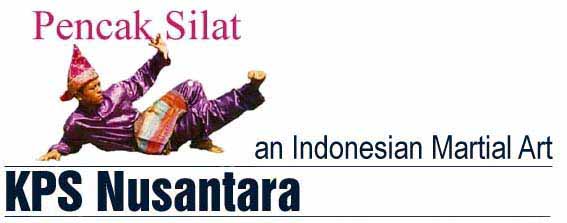|
|
|
Overview:

Silat is a blanket term covering all the fighting arts of the Indonesian archipelago. It is used to describe both indigenous (Pentjak Silat and Poukilan Silat with around 900 estimated styles) and Hybrid arts (Kuntao Silat with around 400 estimated styles).
Origin:
Indonesian Archipelago
History:
Indonesia is a land of spice islands. Their history has always been that of competing tribes and peoples. They also have a history of invasion by foreign powers. The many Silat styles evolved under both. Most Poukilans are tribal arts intended for the entire village to use. Because of the nature of tribal warfare (and the prevalence of cannibalistic tribes), the Silats tend to be designed with weapons in mind and both as and against multiple armed opponents. Very little "sportsmanship" is applied when fighting someone you intend on eating.
|
|
Another group of events defining how the Silat fighting arts evolved is the tendency of everyone around to invade. Indonesia has been claimed by (among others) the Chinese, the Japanese, and the Dutch. In fact, the phrase "run Amok" refers to Indonesian warriors tying off pressure points, grabbing a knife, and walking down the street killing every foreigner they saw. Today in the west, many of the best known Silat players are Dutch-Indo. |
There is also in Indonesia a strong history of Immigration, and many Chinese have moved there. The Chinese Kung-Fu styles were blended with the native Silat styles and form the basis of the hybrid Kuntao Silat styles.
Most recently Islam is becoming the predominant religion of the region. And we are beginning to see it's influences on the arts still popular in Indonesia.
Description:
There is a tremendous amount of variety in Indonesian fighting methods. They range from sports styles, to purely combative styles, to a style designed for a ritualistic challenge of a bridegroom for the bride. So I will talk in generalities.
The Pentjak Silat styles are the indigenous styles which include cultural elements. Here is where you will find the wedding styles, the dance styles, and many of the sport styles. There are also quite a few fighting styles in here. The Pentjaks tend to prefer outside over inside fighting positions. They tend to go from open defensive postures to closed offensive postures. They will occasionally have mystical elements.
The Poukilan Silat styles tend to be pure fighting styles without cultural elements. They tend to be direct and to the point. They tend towards close fighting (Poukilan means "impact"). They also tend to prefer outside positions.
The Kuntao Silat styles are conglomerates of Indo and Chinese fighting methods. They tend more towards closed defensive postures that open to attack. They also tend more toward inside positions when fighting, preferring the availability of soft targets to the safety of outside positions.
The Silats do have animal styles (Harimau (tiger) and Madi (monkey) being two of the better known). They have few if any unarmed styles. They tend to adapt rapidly. There is a tendency to throw out whatever becomes obsolete and add whatever becomes relevant. This is why most modern Silat schools to teach firearm retention and counter-firearm strategies, as well as more traditional weapons (knife, stick, spear).
One noted difference between the Indo arts and the nearby Chinese arts is the tendency of the Indo arts to use already strong structures within the body (as opposed to the Chinese tradition of conditioning the body). This allowed the old, the young, the sick, and the wounded to effectively use these arts.
|
|
|
Training:
With so many arts, there is a great deal of variation in training methods. Some schools teach Silat in a very conceptual way. Some are similar to classical Chinese or Japanese schools. Some teach it around the sparring (like kickboxing). Feel sure that there is a Silat school somewhere that matches your preferred training method.
Definitions:
Silat - Silat means something close to "fighting applications". By itself it has little meaning, rather it modifies the word it is with.
Pentjak - Literally "forms, postures, and movements". Without Silat, Pentjak is useless, and without Pentjak, there is no Silat.
Poukilan - Literally "impact".